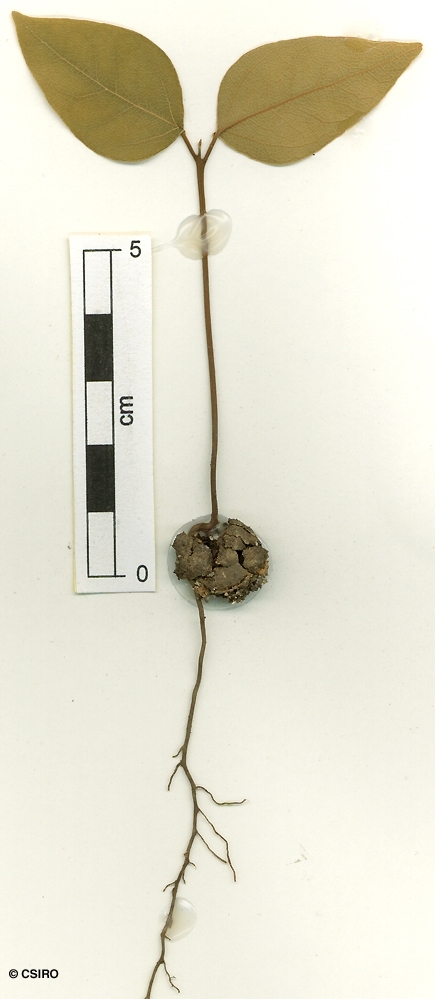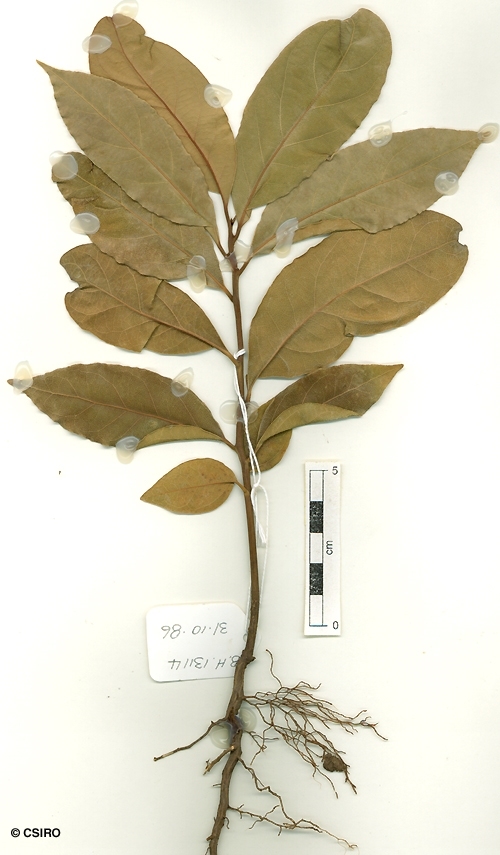Australian Tropical Rainforest Plants - Online edition
Cryptocarya exfoliata C.K.Allen





Allen, C.K. (1942) Journal of the Arnold Arboretum 23: 135. Type: New Guinea,Middle Fly River, Lake Daviumbu, Sept. 1936, Brass 7655; holo: A.
Usually a small tree seldom exceeding 30 cm dbh. Pale brown brittle stripes usually present in the blaze. Blaze odour usually noticeable, sometimes difficult to describe but often pine-like (Pinus spp.).
Twigs fluted, clothed in straight, pale brown, appressed hairs which persist to some extent even on old twigs. Leaf blades about 5-13 x 1.5-5.5 cm, green or slightly glaucous on the underside, clothed in straight, white, appressed hairs when young but eventually becoming almost glabrous. Midrib usually raised on the upper surface. Petiole flat on the upper surface. Oil dots visible with a lens.
Fruits globular or ellipsoid, about 10-13 x 9-11 mm. Cotyledons cream, uniform in texture except for a narrow intrusion of the testa between the adaxial surfaces of the cotyledons.
First pair of leaves ovate or lanceolate, about 20-45 x 10-21 mm, green on the underside. First pair of leaves have lateral veins forming loops well inside the blade margin with the first pair of veins arising at the base of the leaf blade. At the tenth leaf stage: upper surface of leaf blade with a raised midrib; oil dots very small, visible only with a lens; petiole hairy. Seed germination time 18 to 62 days.
Occurs in NT, CYP and NEQ as far south as Cairns. Altitudinal range from sea level to 450 m. Grows as an understory tree in drier rain forest and monsoon forest. Also occurs in New Guinea.
This species has no commercial value as it seldom grows large enough to produce millable logs. Wood specific gravity 0.86-0.92. Hyland (1989).





